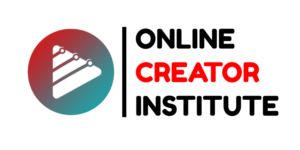Have you ever craved a free Krispy Kreme glazed donut and so you sign up for their emails and now their daily emails just end up in your junk mail?
Maybe you wanted a 20% discount of a fishing rod for your mate’s birthday but now your mailbox is filled with 93 unread emails from them.
This is a beginners guide to understanding the importance of sending targeted Email Marketing. From learning why having a targeted strategy is important to learning the theory behind contact management and segmentation, employing the correct methods will increase customer interactions and also promote business and personal career growth.
“77% of email marketing ROI came from segmented, targeted, and triggered campaigns.”
The DMA
The importance of Email Marketing:
One of the forms of Digital marketing or inbound marketing strategy is Email Marketing. Email marketing is so popular that by 2020 it will surpass other digital marketing platforms such as YouTube, Instagram, and Facebook.
“There will be 3 Billion Email Users Expected By 2020”
HubSpot Report 2018
To attract strangers and turn them into visitors, blogging, social media and your website is optomised. These visitors engage with your business motive, visiting whenever they want. Next, these visitors are converted into leads by gathering their contact information. Now, it’s time to turn those leads into customers. This is why emails are used.
Sending emails nurture your leads by sending them the content they signed up for and persuading your message to them, at the right time consistently. Nurturing your relationship with customers beyond their initial visit to your content turns them into promoters of the products to other people, continuing the buying process.
Creating a Contact Management and Segmentation strategy
Two aspects of creating a successful email marketing strategy:
- Contact Management
- Segmentation
Contact management is a targeted strategy that focuses on using a software program like HubSpot to easily store a contact’s information, including their name, contact history and email information. This allows targeted messages to be sent to customers by viewing their contact information. Before sending messages, it’s important to have their permission to send emails, it is illegal and punishable to send unsolicited emails. Here is where you also get to see contacts who have unsubscribed, people who have hard-bounced and a list of contacts who haven’t opened an email in a year.
Segmentation, at its core, brings together two key inbound concepts:
- buyer personas
- the buyer’s journey.
To send the right email at the right time to the right person, it is crucial to know who that person is and where they are in their buying journey.
- Buyer personas: A semi-fictional portfolio of your ideal customer based on data and educated speculation about demographics and behavior patterns.
- Buyer’s journey: The research a customer undertakes before deciding if they want to buy anything.
Each stage represents the experiences your potential customers go through. By using the information you have on your contacts in these categories, you will be able to create segments of people who want similar content.
The 3 best practices for creating a successful segmentation strategy:
- Having a clean and organized database
- Collecting the right information
- Understanding explicit and implicit data.
A clean and organised database
To send segmented messages, you must always have a clean database.
“Your contact database naturally decays every year by 22.5% every year”
HubSpot
To keep your database clean some contacts should be deleted such as, such as spam submissions or ineligible contacts. This filters out the contacts you don’t want to waste time spending emails to.
“Segmented campaigns receive less unsubscribes by 9.37%.”
MailChimp
An organised database consists of:
- The contact- Your subscribers, leads and customers or anyone else in contact with your business including employees and competitors.
- The contact properties- Stored information about an individuals name, email address, location, products/services of interest or when the customers purchased.
- The companies and their properties- Information about a group of contacts from a single company, like the company’s name, location, and website url.
Collecting information
What information you need to collect:
- The buyer persona they’re associated with.
- Where they are in the buyer’s journey.
This can be extracted from assigning buyer personas to your contacts when they fill out a form, survey or talk to chatbots. You could give them a persona when they fill out a certain form associated with a specific type of content. This allows you to determine the customer’s position in the buyer’s journey.
Explicit and implicit data
- Explicit data: information shared between a contact and a company. For eg, contact fills out on a landing page or contact us form.
- Implicit data: information gathered from user behavior. This includes social media engagement, how often they open emails, and their purchase behavior.
By collecting all of this information, by bringing together a clean and organized database, collecting the right information, and understanding implicit and explicit data for your segments it will help you create the foundation for sending targeted emails to cater to individual needs.
“Marketing is no longer about the stuff that you make, but about the stories, you tell.”
Seth Godin
In conclusion, these are the basics of what goes behind a great email marketing strategy that caters to your specific needs. There are many more details that go into sending the right email, however understanding the fundamental concepts, allows for a clearer understanding of the bigger concepts. For email marketers it is crucial to realise that customers are in different stages of their buying journey, some are still considering buying and some are just viewing your products/services, understanding this gives a better consumer experience to your customers.
For more information on How to Keep Someone Engaged particularly your customers or an audience check out Online Creator Institute.
